At least two ICF homes took a direct hit from the recent Oklahoma tornado. A post-disaster survey reveals why they survived—and how they could be made even stronger.
In the last 12 months, severe storms have devastated the Atlantic coast and Midwest. ICF structures in the paths of these storms survived far better than their stick-framed counterparts, and that’s getting the attention of the building officials and political leaders that will lead the rebuilding effort. It’s also revealed a few weak points that need to be strengthened if ICF homes are to be considered truly disaster-proof.
On May 20 of this year, an EF5 tornado touched down just south of Oklahoma City. With winds estimated at 210 miles per hour, it stayed on the ground for 39 minutes, churning a 17-mile path of destruction through the heavily populated suburbs of Newcastle and Moore. At its widest, the tornado’s vortex was 1.3 miles wide as it demolished homes, businesses, and sadly, two elementary schools. Witnesses said the tornado more closely resembled “a giant black wall of destruction” than a typical twister. An estimated 1,150 homes were destroyed, with 23 deaths and an additional 377 injuries.
In the days following the storm, Reward Wall Systems, an Omaha-based ICF manufacturer, was contacted by a homeowner to notify them that their Reward ICF home had taken a direct hit from the tornado and invited the company to inspect it.
Troy Gibson, the marketing manager, and Kelvin Doerr, VP of Engineering, made the trip to Oklahoma City, and while there were notified of a second ICF home—also built with Reward ICF—that was in the tornado’s path. Both homes survived the storm with the walls still structurally sound, despite a full-sized pick-up truck smashing in to one of them at the height of the storm. More importantly, both houses kept their occupants safe.
149th Street Home
Faye and Art began construction on their dream home back in 2002. Built with Reward’s 11” iForm (with a monolithic 6” core), the couple moved into their home two years later. Located on a large acreage lot on the east end of 149th Street, the estate also included a swimming pool and a stick-frame barn for Faye’s 11 horses and three cats.
This same neighborhood was hit by a major tornado in 1999, and as the two-story house has no basement, Faye and Art built an ICF “safe room” with a concrete roof just off the kitchen behind a sturdy steel door for emergencies.
As it happened, neither was home when the tornado touched down around 3 p.m. Although the acreage was slightly east of the worst damage, officials told the owners the twister was already an EF5 at the time it hit their property. The media later dubbed the area the “149th Street corridor of destruction.” All the neighboring houses were reduced to rubble. The twister obliterated Faye’s barn and sadly, all the livestock as well. The house itself lost its wood-framed roof. But while the interior was severely damaged, and several exterior walls resemble pincushions of wind-blown debris, the ICF walls remained structurally sound and the ICF saferoom (including the saferoom roof) were virtually unscathed. As a bonus, over most of the past 10 years, the home operated with a 50% energy savings.
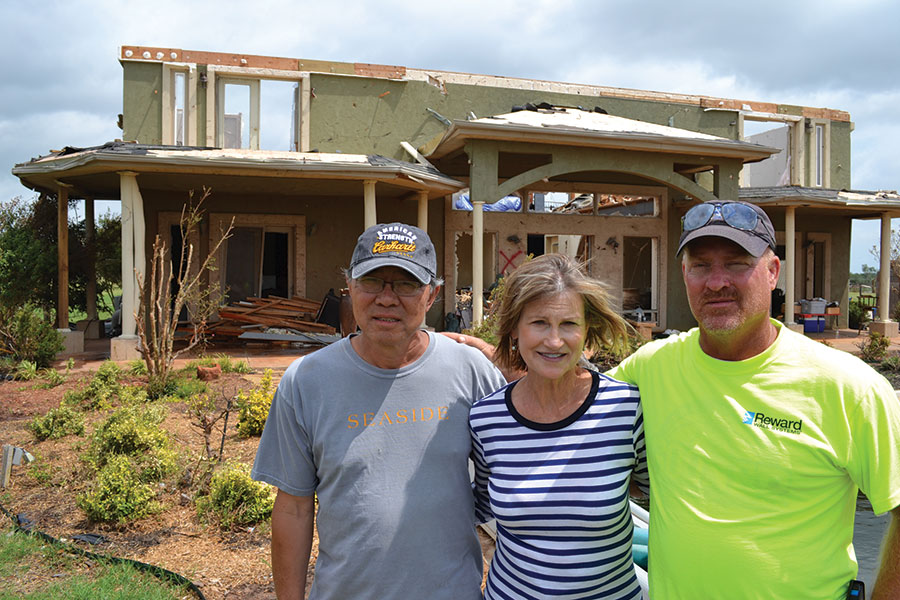
Homeowners (from left) Art and Faye, along with ICF homebuilder Bill R. stand in front of what remains of their home after being pummelled by 200+ mph winds.
Newcastle Home
Kenny’s ICF home was built back in 2000 with Reward’s now-obsolete 9 ¼” waffle-grid eForm. The system has 6” diameter columns and beams every 16” on center; in between them, the concrete is only 2.5” thick. Waffle grids are a rarity now, pushed out of the market by the simplicity of flat wall ICFs.
On the afternoon of the tornado, Kenny was sleeping—he works graveyard shifts—and was awakened by the tornado sirens. He turned on the television for information, only to find live footage of the tornado touching down only three miles away! He immediately took shelter in his safe room, built with four ICF walls, a concrete roof, and a storm-resistant metal door. Within 5 to 10 minutes, the deafening roar of the tornado made it clear the twister was directly on top of him.
“I felt pretty confident while I was inside,” he says, “but then the storm just kept churning.” As the mile-wide vortex slowly made its way over Kenny, he could hear—amidst the roar of the wind—the windows exploding, and the sickening sound of the roof peeling off. The storm eventually moved on, and after agonizing minutes of stillness, he opened the door. “I came out and most of my house was open to the sky,” he says. The surrounding neighborhood was gone. The brick veneer exterior of his home had disappeared as well.
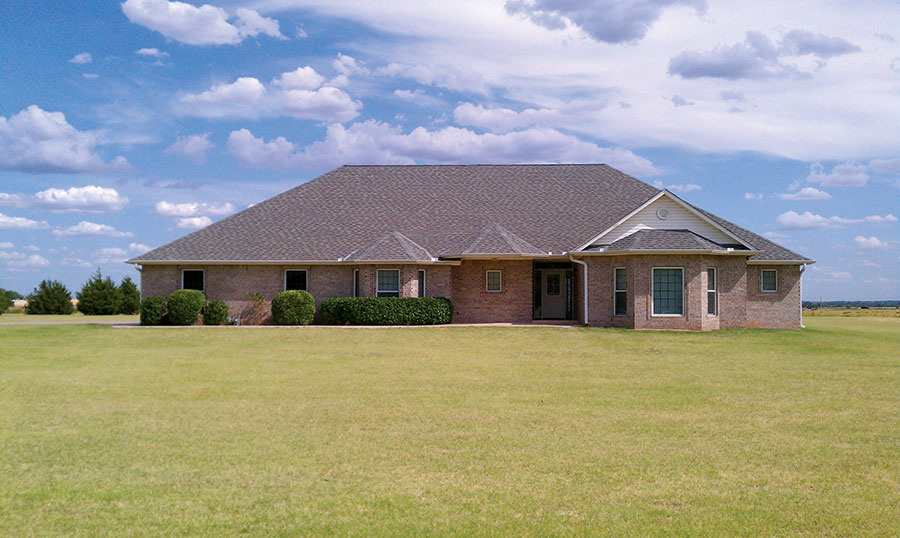
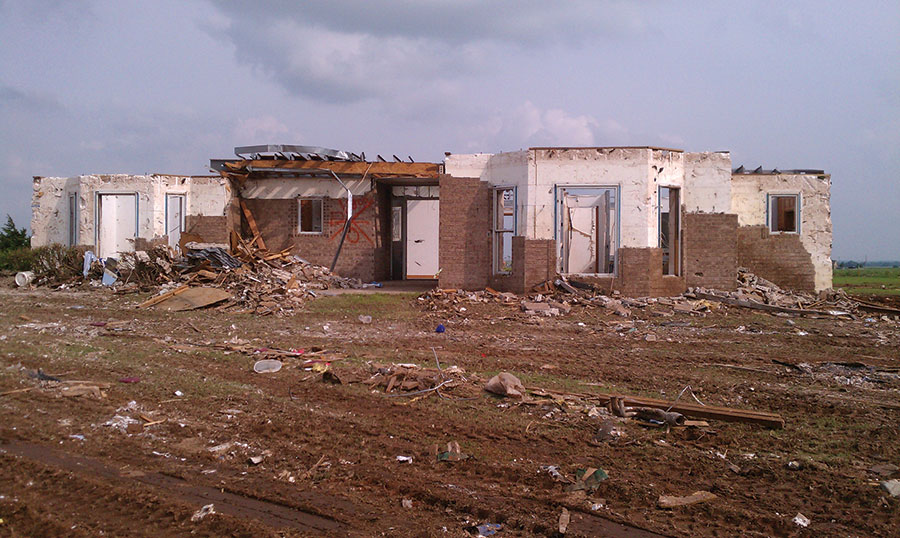
Ravaged by an F5 tornado, this home protected its occupant despite being severely damaged, as these before-and-after pictures show.
The intensity of the wind defies belief. The roof had been attached to the ICF walls with an anchor bolted rim joist. “In many areas the wood rim joist pulled through the top of the anchor bolts,” reports Doerr, the Reward engineer. Electrical cables were pulled from their runs, leaving the outlets deeply recessed in the wall.
The attached garage and detached shop had been built with light-gauge metal studs, and were completely destroyed. Their contents (lawn mower, jet skis, cars, and boat) were found a quarter mile away.
The south side of the ICF structure took the brunt of the winds, and the tornado even threw a full-sized Toyota Tundra directly into the exterior wall of the safe room, and yet the wall did not budge. (It was penetrated, however, by a flying metal fencepost that impacted the wall in one of the thinnest sections of the grid.)
The window bucks, a vinyl system called V-Buck, held up very well. In fact, despite its dramatic appearance, the shell of the house is still structurally sound. Kenny plans on stripping out the interior, repairing the foam on the ICF walls and rebuilding the rest. Kenny says that without a doubt, the ICF walls saved his life. “It did its job,” he says. “It stood up to the tornado and kept me safe.”
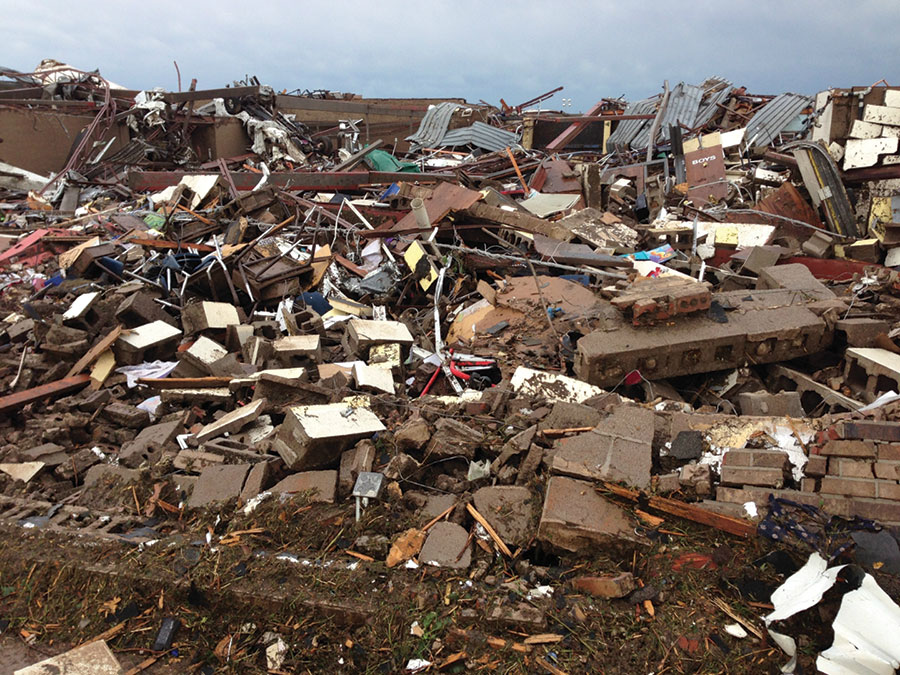
Briarwood Elementary School, built with CMU block, was reduced to rubble by the force of the winds. Some districts are building with ICF to create stronger, more disaster-resistant structures.
Conclusions
Faced with one of the world’s most extreme weather events, ICF homes withstood the winds and debris admirably. In comparison to the nearby elementary school, which was built with CMU and reduced to a pile of rubble, ICF structures performed exceptionally well.
Gibson says, “Hopefully these photos and the testimony of the owners can influence a few people out there to build with ICFs and give their family and occupants the best chance to stay safe.” Mayor Glenn Lewis of Moore has already stated that he will attempt to get an ordinance passed requiring storm shelters or safe rooms in new housing projects, which may create opportunity for the ICF industry.
The tornado also revealed areas the industry needs to address—topics which this magazine will cover in a future issue. For true tornado resistance, roofing needs to be upgraded. In one case, the owner used hurricane straps on the roof trusses, only to have the tornado pull the plywood sheathing off. If the roof is destroyed and the contents scattered and soaked, the home is often considered a total loss for insurance purposes, even if the walls remain intact. Second, waffle grid ICF homes were occasionally penetrated by debris, often enough that it was alarming to the designer. If disaster-resistance is a primary concern for the building owner, this data should be taken into consideration.
Special thanks to Troy Gibson at Reward Wall Systems for providing the information in this article. In addition to the description and pictures published here, additional photographs and video footage, including firsthand testimonials from the owners can be viewed on Reward’s blog, Facebook page, and YouTube channel.
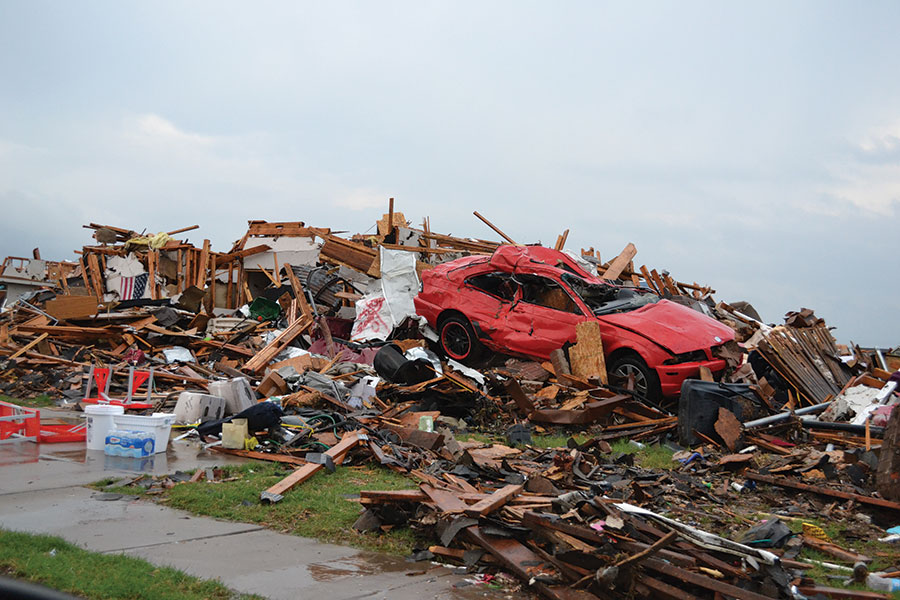
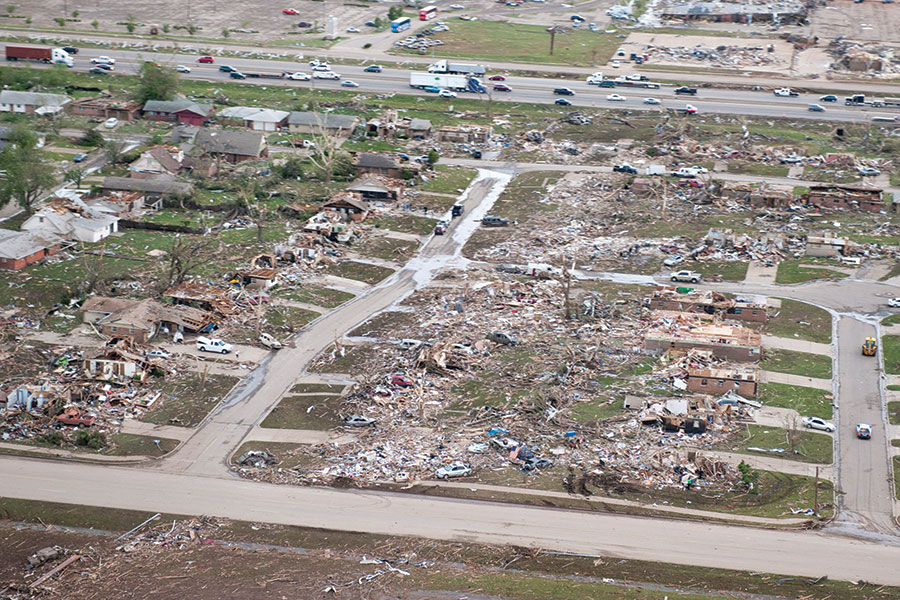
More than a mile wide along most of its course, the tornado pulverized entire neighborhoods.

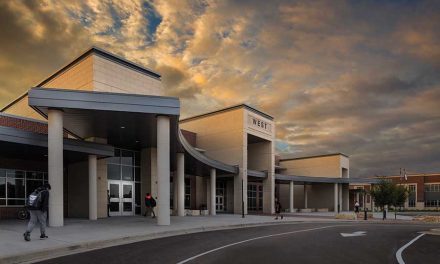
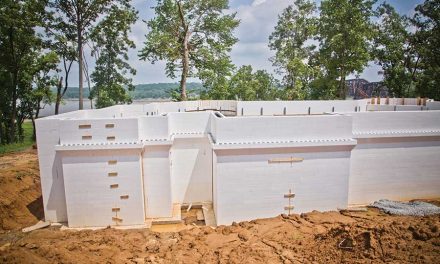
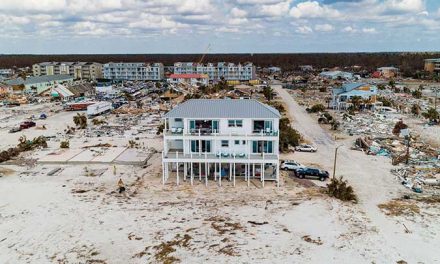
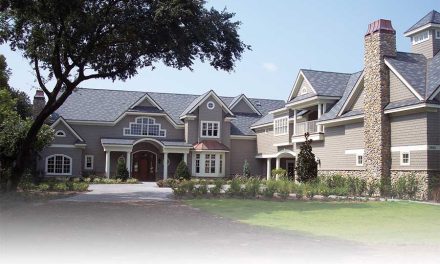







Trackbacks/Pingbacks